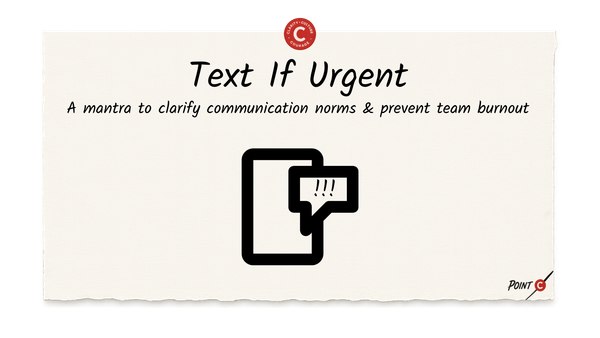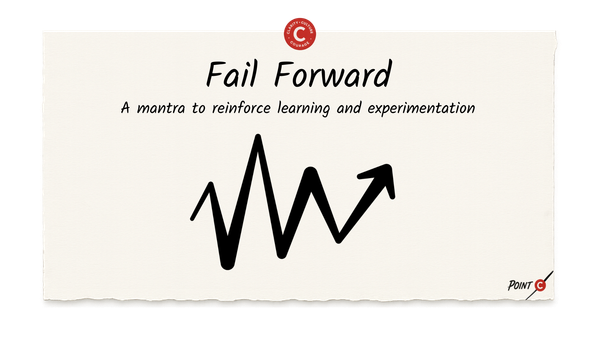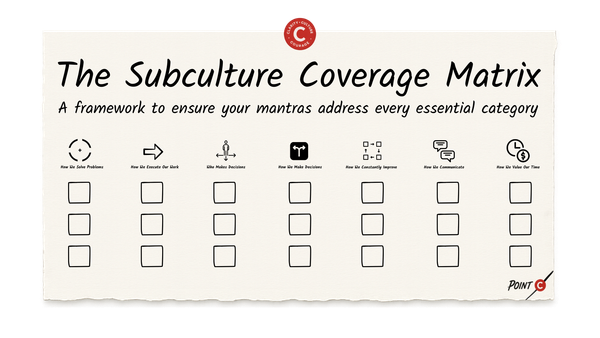The Rubric
A way to uphold high standards without killing creativity
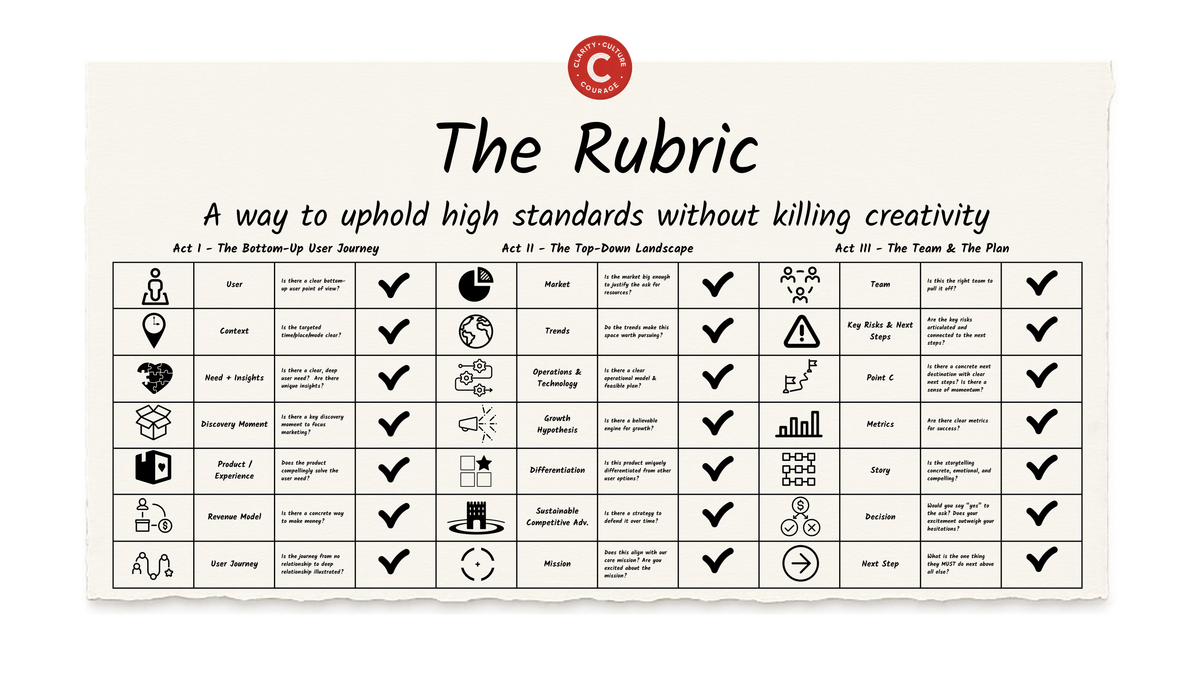
Welcome back to The Idea Bucket.
In last week’s post, we explored The Selection Stack — a ritual to align on what success looks like before you evaluate ideas.
This week, we go one step further.
Once you’ve aligned on your selection criteria, you need a way to make them persistent — to make those expectations visible, expected, and integrated into your rituals.
That’s where this week’s framework comes in.
(And before we dive in, just a quick note that applications for Sulzberger Executive Leadership Program at Columbia Journalism School have opened up. Learn more here.)
Introducing: The Rubric
High-performing innovation teams shouldn’t know the solution they’ll come up with at the start of the journey — that’s why it’s innovation — but they should know what “great” will look like when they get there.
Because they've done the pre-work.
- They've written their criteria down.
- They've ensured each team member understands why each criterion is important.
- They've built it into their rituals.
- And they reinforce these high standards in an effort of constant improvement.
A good rubric helps you do exactly that. It’s a concrete tool for:
- Upholding high standards
- Creating shared clarity
- Reinforcing a learning culture
Without a rubric, “high standards” are often just vibes. And vibes are dangerous.
Because here’s the trap: without The Rubric, the loudest voice in the room — or the strongest instinct in the culture — becomes the default decider.
When you don’t define the bar together, someone else will define it for you — often unintentionally. You start optimizing for just one lens: mission, revenue, user, product — whatever your org already over-emphasizes.
That’s not high standards.
That’s imbalanced standards.
And without psychological safety, nobody feels comfortable pointing it out.
That’s why a good rubric matters:
- It gives you clear standards without relying on personal authority.
- It builds a culture where feedback is expected — not feared.
- It enables a team to self-manage and course-correct.
This is how you build The Learning Zone: where high standards and psychological safety coexist. (We’ll go deeper on Amy Edmondson’s Learning Zone in a future post.)
What Is The Rubric?
What if you had a document that could help your team guide itself? A simple tool that builds leadership muscle, surfaces tradeoffs early, and keeps everyone aligned on what “great” looks like — without you having to constantly step in.
That’s what The Rubric does.
It gives your team a shared target they can evaluate against as they build. It allows leaders to maintain high standards without micromanagement. And it teaches the team how to self-correct — so decisions don’t bottleneck on you.
The Rubric is a simple, persistent checklist of what “great” looks like for your team.
It makes expectations visible.
It names the angles you're solving for.
It creates a shared definition of quality that everyone can see — and aim for — as work unfolds.
Done well, it becomes:
- A decision-making guide
- A feedback tool
- A leadership language
- A safety net against bias and blind spots
It doesn’t tell people how to build. It tells them what excellence includes — so they can find the best way forward.
Why You Need A Rubric
Rubrics aren’t just for grading.
They’re for guiding.
They make expectations visible.
They protect against bias.
They empower teams without micromanaging them.
Here’s what happens without one:
- Tradeoffs happen in the background — without being made explicit.
- Critical dimensions get skipped — not because people disagree, but because they were never named.
- Decisions get driven by whoever speaks with the most confidence, passion, or authority.
- Strategy drifts — small omissions compound into bigger blind spots over time.
Especially in mission-driven orgs, there’s a common pattern:
The mission pitch is so strong, it’s like taking a warm bath.
You feel inspired — but your strategy senses get dulled.
The mission feels so good that you don’t realize what’s missing until it’s too late.
A rubric wakes you up.
- It forces you to check for completeness.
- It makes sure excitement about one angle doesn’t override all others.
- That mission doesn’t blind us to a poor strategy.
- That top-down business goals don’t override understanding the bottom-up user need.
One angle might still carry the most weight — but now that’s a choice, not a blindspot.
The Venture Design Rubric
Here’s the latest iteration of the default rubric I use with founders, executives, and intrapreneurs across my programs:
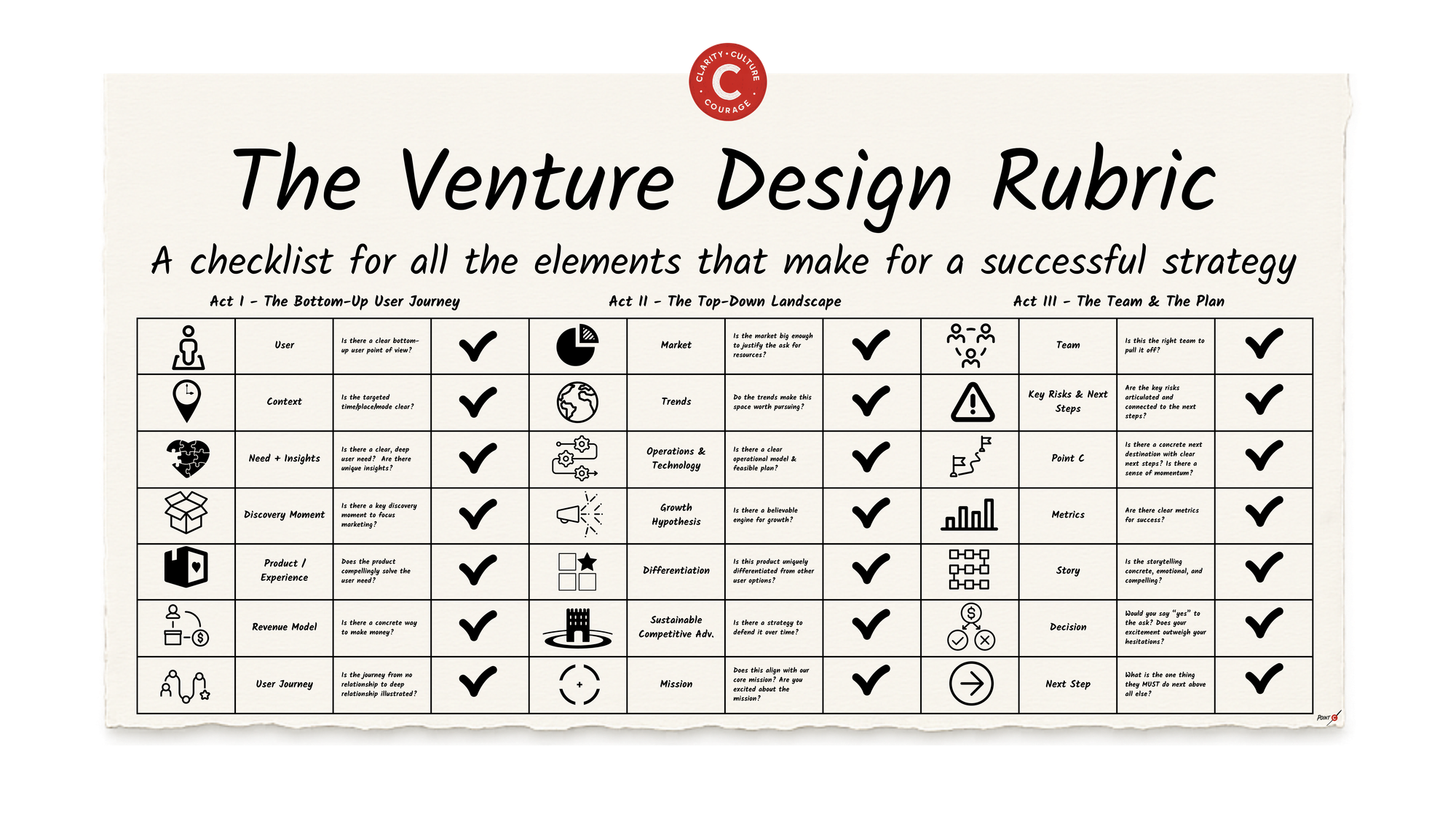
It covers all the critical elements you should be thinking about — structured across the three narrative acts that mirror how strong venture stories get told and evaluated. I ask these questions of the audience anytime a team presents a strategy for feedback.
Act I — The Bottom-Up User Journey
- User — Is there a clear bottom-up user point of view?
- Context — Is the targeted time/place/mode clear?
- Need + Insights — Is there a clear, deep user need? Are there unique insights?
- Discovery Moment — Is there a key discovery moment to focus marketing?
- Product / Experience — Does the product compellingly solve the user need?
- Revenue Model — Is there a concrete way to make money?
- User Journey — Is the journey from no relationship to deep relationship illustrated?
Act II — The Top-Down Landscape
- Market — Is the market big enough to justify the ask for resources?
- Trends — Do trends make this space worth pursuing?
- Operations & Technology — Is there a clear operational model & feasible plan?
- Growth Hypothesis — Is there a believable engine for growth?
- Differentiation — Is this product uniquely differentiated from other user options?
- Sustainable Competitive Advantage — Is there a strategy to defend it over time?
- Mission — Does this align with our core mission? Are you excited about the mission?
Act III — The Team & The Plan
- Team — Is this the right team to pull it off?
- Key Risks & Next Steps — Are the key risks articulated and connected to the next steps?
- Point C — Is there a concrete next destination with clear next steps? Is there a sense of momentum?
- Metrics — Are there clear metrics for success?
- Story — Is the storytelling concrete, emotional, and compelling?
- Decision — Would you say “yes” to the ask? Does your excitement outweigh your hesitations?
- Next Step — What is the one thing they MUST do next above all else?
This rubric gives teams a shared target. It helps us name what’s strong, what’s missing, and what we’re intentionally prioritizing.
I don't expect every box to be checked the first, second, or third time a strategy is pitched. You can't solve for all variables at once. But as you lock some of them down, you then figure out how to achieve the others — as you do the drunken walk of the innovator.
A Real Adaptation
I recently worked with a client where we started using the Venture Design Rubric.
It was incredibly helpful to concretely identify big missing holes in the way their team was thinking about strategies. But as we kept going, something became clear:
Their values, OKRs, KPIs — all the things that supposedly mattered most — were buried in documents that weren’t persistently and comprehensively being referenced in the moments that mattered.
So we integrated these elements into a restructured rubric with three custom categories:
- User Journey — Retaining the Venture Design Rubric's challenge to have a clear, concrete bottom-up user journey to ground the first act of every pitch.
- Strategic Imperatives — Building in key themes that were talked about in executive team and board meetings but had not successfully been adopted en masse: recurring revenue, direct relationships, operational plans, and empathy processes.
- Organizational Values — Core North Star values that lived in decks about the mission but either weren’t persistently referenced while evaluating strategies, or, more often, were being used as the sole lens, disconnected from the categories above.
We didn’t invent anything new. We just surfaced what was already true — and put it all in one place that stared back at all of us, most of the time.
We turned static values into active standards.
We made the rubric a living part of how strategy happens.
(More in a later post on the importance of clarifying and separating the core values that never change from the strategies that must evolve as the world does.)
A Note On Rubrics & Rituals
So how do you actually use the rubric?
The ritual where I use it the most is: The Design Review.
I’ll go deeper on The Design Review next week because it deserves its own post. But here’s the essence:
The Design Review is a way to regularly fail fast and get feedback to succeed sooner. It's the ritual where high standards and high psychological safety come together to truly create a culture of innovation.
A team pitches their strategy to the rest of the group, who are both giving feedback and presenting their own strategies. Then the facilitator reads through each question on the rubric — the same way, every time — to see if the audience believes the team achieved that angle.
The audience reacts in real time:
- Two hands up = Strong Yes
- One hand up = Lean Yes
- No hands = Lean No
- Arms crossed = Strong No
In less than 90 seconds, you get a clear snapshot across every angle.
Then we open it up for verbal feedback. The only rule:
The presenter takes notes. They can’t respond. They can only say: Thank you.
In order to run a good Design Review, you need a great rubric. Start by asking:
- Are we clear on what “great” looks like?
- Have we written it down so we all can look at it together?
- Have we all bought in to why each of these criteria matter?
- Have we put it in a place where we'll regularly see it?
- Are we consistently reinforcing these standards?
What The Rubric Unlocks
When you do the work of building a rubric, here’s what you get:
- High standards without micromanagement
- Teams who know what “good” looks like
- Feedback that’s consistent, not personal
- A faster path to learning, because the target is visible
- A team that self-corrects before the leader has to intervene
- A ritual that builds the strategic lens of every team member
Your Challenge This Week
Build your own rubric for what a great strategy should look like at your company:

- Start with The Selection Stack that you made last week. Compare it to The Venture Design Rubric. Is there anything missing?
- Download Our Venture Design Rubric Worksheet. Use my default criteria as your starting point.
- Cross out or remove any questions that don’t apply to your team.
- Add any new custom criteria that reflect your company’s mission, values, OKRs, or KPIs — use the “Our Custom Criteria” column in the worksheet to capture these.
- Share your draft rubric with your team. Let them push back, refine, and co-own it. (Better yet: have team members build their own versions first, then compare.)
- Run a strategy pitch using your updated rubric. Ask the full set of questions and see how it pushes your team’s thinking. (Tip: Have team members give feedback first. The leader goes last — you’re building their strategic muscles.)
- Iterate until it feels right.
You’ll be surprised how much clarity this simple tool can bring.
I'd love to see your version of the rubric. Reply to this email, comment below, or reach out at theideabucket@pointc.co.
Next Week
You’ve defined what “great” looks like. Now you have to build a ritual that gives your team consistent, real-time feedback while they’re building:
The Design Review
A ritual to ensure teams fail fast to get feedback and succeed sooner
More on that next week.
About This Newsletter
The Idea Bucket is a weekly newsletter and archive featuring one visual framework, supporting one act of leadership, that brings you one step closer to building a culture of innovation.
It’s written by Corey Ford — executive coach, strategic advisor, and founder of Point C, where he helps founders, CEOs, and executives clarify their visions, lead cultures of innovation, and navigate their next leadership chapters.
Want to give your teams an immersive learning experience on these concepts? Bring me in to run The Point C Training Camp at our company. Want 1:1 executive coaching on this framework or others? Book your first coaching session. It's on me.

